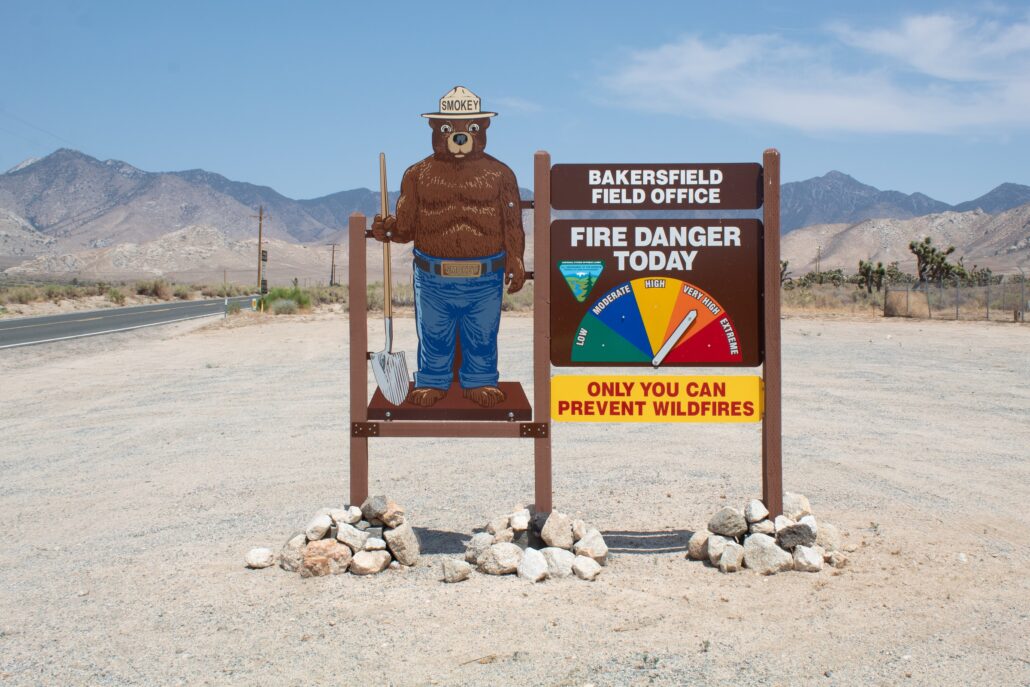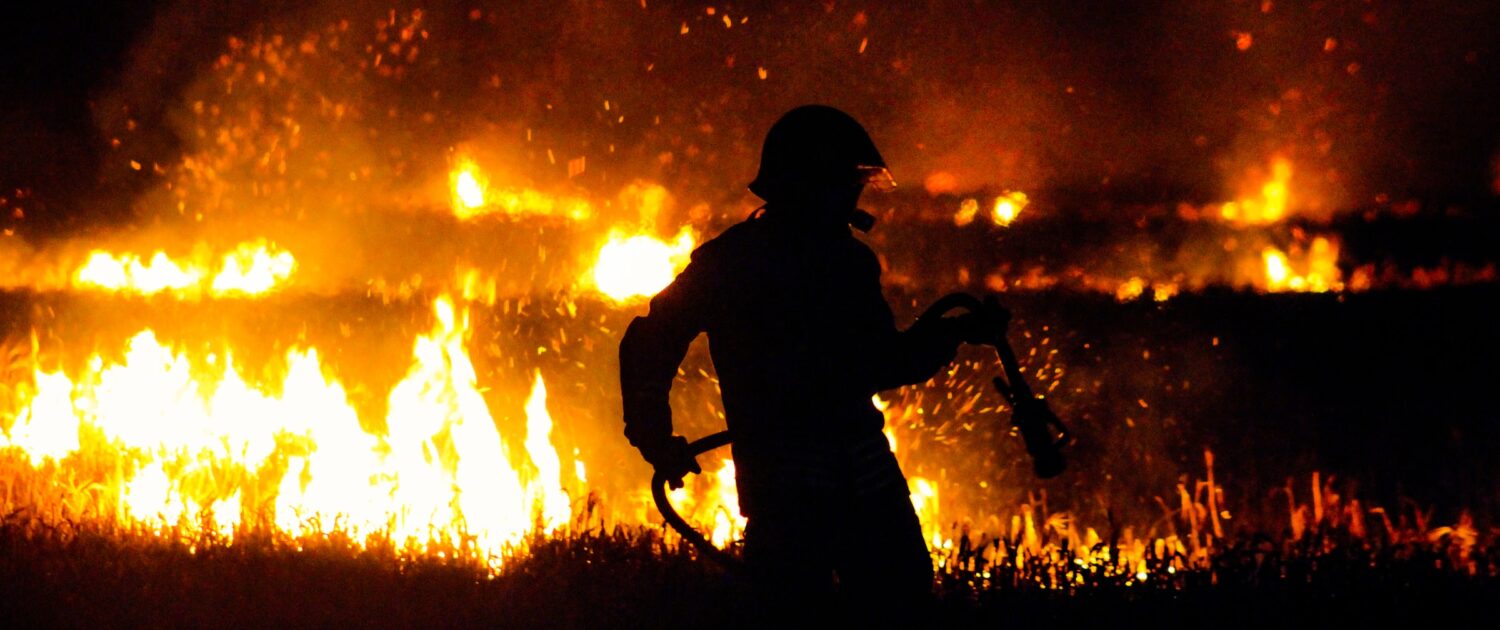April 14, 2022

The forest fires situation in Italy has been exceptionally dramatic last year and these first months of 2022, both in winter and (especially) in summer [1]. The data is clear and unequivocal but what are the true causes of this situation? And what can we do to limit tragic environmental, social and economic damages?
BEFORE
Right after the fire is extinguished, or typically, when it is still on, public opinion always seems to focus on the anthropic responsibility of the fire. «[…] And it is now clear that it is an arson that is blocking the [provincial road] Sp251» [2]. And yet, identifying the responsible and the spark that triggered the fire is often an arduous task. Simply labelling it as “arson” is often not enough because the anthropic conditions that can lead to a fire ignition are countless: either voluntary or involuntary, evident or doubtful, or natural. And what does “natural” really mean? Are “natural” conditions intended as “ordinary” or “naturally related to climate factors”, such as the climate crisis and the rising temperatures? The discussion is huge and often solved by using “natural conditions” in a way that comprises all the mentioned definitions.
An (old) document of the former Corpo Forestale dello Stato (Italy’s former National Forestry Agency) provides a detailed description of all the causes that may trigger forest fires [3]. Although 21 years old, the study has laid a foundation to determine and classify fires that is still largely valid today. Nonetheless, the document undoubtedly lacks the link between climate and fires. Perhaps not yet perceived as determinant at the beginning of the 2000s, the climate factor is now seen as a key element in forest fire studies and, considering the current climate crisis, the biggest challenge of our time [4].
Whether intentional or unintentional, anthropogenic fires, have been predominant in recent years. Completed after the dramatic 2020 forest fires season, a study by the Carabinieri’s Command of the Forest, Environmental and Agri-food units (“CUFAA”) has shown that natural causes – and especially lightning – causes only 2 % of the total forest fires. Instead, fraudulent causes are «[…] linked to pasture establishment, hunting and social unrest». Traditional burning of plant residues in farming and forestry activities is also a main cause of unintentional fires [5].

Fig. 1: Rapidly securing the affected areas immediately after the fire beginning is a key factor to limit the damage severity to the natural environment and the local people. Photo by Fabian Jones (February 2021).
AFTER
Similarly to forest fire causes analysis, fire consequences study is complex and must consider several factors that may seem quite different from each other at first glance. While emergency response is not always decisive and effective, prevention and proper management of forests and adjacent areas are crucial for limiting fires [1]. Yet, fire departments and rescue teams are indispensable when the fire is in action.
Damages from forest fires are several and of different nature because fires harm both the environment and the safety of the people living in the affected areas. In their post-fire management analysis, the Italian Society of Forestry and Forest Ecology (“SISEF”) stresses the need to promptly monitor the damage severity and quickly secure the affected areas [6].
These measures are undertaken in the very first weeks after the fire occurs. They must be activated as soon as possible and before the fire is totally extinguished. Indeed, the most urgent danger to tackle is the hydrogeological instability. Many times, a fire can destroy the roots of trees and compromise the stability of the plant-soil-rock system. Moreover, it deposits light ashes on the ground, which can temporarily create a condition of soil impermeability. When the first late summer – early Fall rainfalls and storms arrive, water runoff is stronger and soil erosion cases more frequent [7].
The real fire management happens in the years and decades after the fire. As with other disturbances (windthrows, insect outbreaks, etc.), the most pressing question is whether to act or leave it to nature. To intervene, and if so, for what purpose? These questions can only be answered only through an in-depth understanding of the landscape and forest ecosystem. Finally, city and land planning must also be considered when choosing the right fire recovery, protection and prevention measures. In the end, prevention and correct management are still the best and most effective solutions.
Cover- and preview photo: Smokey bear illustration and wildfire prevention sign. Bakersfield, California (July 26, 2021). Free-source photo by Brian Wangenheim on Unsplash.
Figure 1: Silhoutte of a fireman working on a burning grass field (). Free-source photo by Fabian Jones on Unsplash.
Bibliography:
[1] Gecchelin, M. (2022, March 15). Adapt or burn. A look at the dramatic increase of wildfires in Italy to get ready for summer 2022. GreenMarked. https://greenmarked.it/adapt-or-burn-the-2021-wildfire-season-italy/.
[2] il Dolomiti. (2022, March 23). Le fiamme divorano il bosco fra Longarone e Zoldo. Arrivano i Canadair e gli elicotteri: Chiusa la provinciale. il Dolomiti. https://www.ildolomiti.it/cronaca/2022/le-fiamme-divorano-il-bosco-fra-longarone-e-zoldo-arrivano-i-canadair-e-gli-elicotteri-chiusa-la-provinciale.
[3] Corpo Forestale dello Stato. (2001). Le cause degli incendi boschivi. https://www.sistemaprotezionecivile.it/allegati/140_Cause_degli_incendi_boschivi.pdf.
[4] Greenpeace Onlus. (2020). Un paese che brucia: Il report sui cambiamenti climatici e gli incendi boschivi in Italia a cura di GREENPEACE e SISEF (p. 33). Greenpeace Onlus. https://www.greenpeace.org/static/planet4-italy-stateless/2020/08/1e5628b6-report_incendicc_finale.pdf.
[5] Rositi, A., Lovreglio, R., & SISEF, G. (2021, December 10). Il 2020 in incendi: Il rapporto EFFIS. SISEF. https://sisef.org/2021/12/10/il-2020-in-incendi-il-rapporto-effis/.
[6] Marzano, R. (2021, August 19). La gestione post-incendio inizia prima che le fiamme siano spente. SISEF. https://sisef.org/2021/08/19/la-gestione-post-incendio-inizia-prima-che-le-fiamme-siano-spente/.
[7] Ortolani, F. (n.d.). Gli incendi boschivi? Premesse di catastrofi idrogeologiche. Università degli Studi di Napoli Federico II. Retrieved April 11, 2022, from http://www.unina.it/-/1326892-gli-incendi-boschivi-premesse-di-catastrofi-idrogeologiche.


